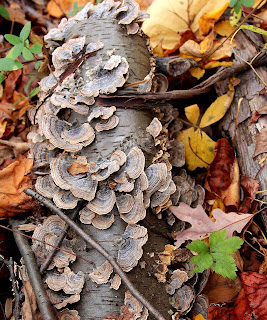For the last two years, I
occasionally have seen a white-splotched female deer in my preserve. This strikingly distinctive (and not very
shy) doe frequents the meadows and a private fenced-in lawn just south of my
organization’s headquarters.
This doe is pied (or piebald), a
condition that is relatively common among mammals, birds, and even reptiles. A pied
animal has irregular unpigmented patches of hair, feathers, or scales commingled
with normally pigmented patches. The animal's skin is also unpigmented under
the light patches and pigmented under the dark patches. The piebald condition results from leucism, a genetic
abnormality in which pigment cells fail to develop normally while the animal is
an embryo. If all of the animal’s pigment
cells fail to develop normally, the animal will be completely white; if only
some of the cells are defective, the animal will be piebald.
Though the doe stands out because of her large white patches, she is not an albino. In albinism, only the cells that produce the
pigment melanin are defective whereas other pigment-producing cells continue to
function normally, so albinos often have a pale yellow color created by other
pigment-producing cells.
Another
difference between albinism and leucism is eye color. Albinos cannot produce melanin in their eyes, so
they typically have red eyes because the underlying blood vessels show through.
In contrast, Pennypack’s piebald doe,
like most piebald animals, has normally colored, dark eyes because the pigment
producing cells in its eyes developed from different embryonic tissues than did
its skin and fur cells.
The
proportion of white to normal-colored skin on individual piebald animals can
vary considerably between generations, between different offspring from the
same parents, and even among members of the same litter. Our piebald deer is a perfect example of this
characteristic of leucism because our deer had two fawns in the spring of 2015,
both of which were completely normal in coloration.
Incidentally, the terms pied and
piebald entered the English language five centuries ago. These terms referred to the magpie's
black-and-white plumage combined with “bald” in an obsolete use meaning
“streaked with white.”


















































